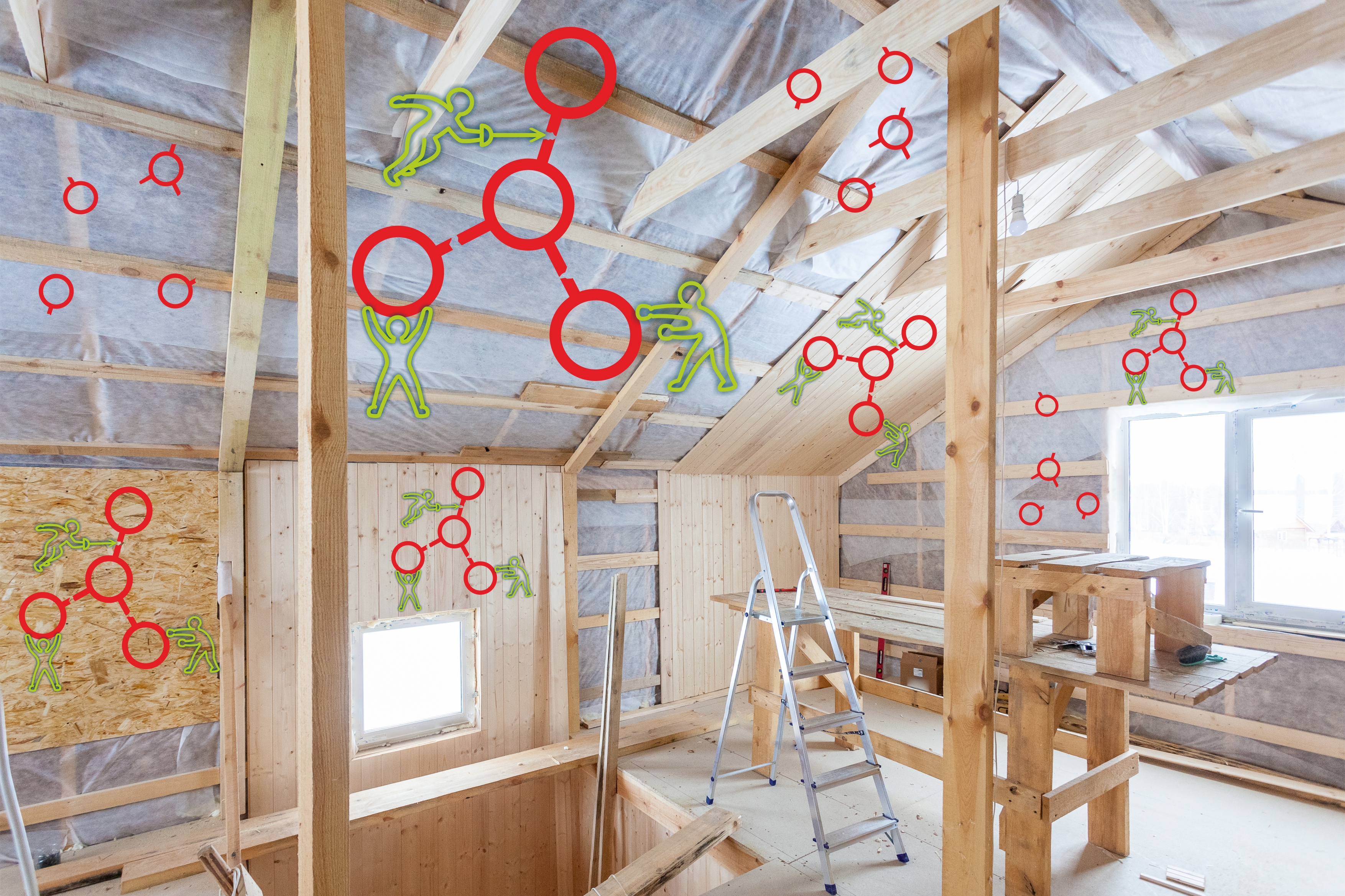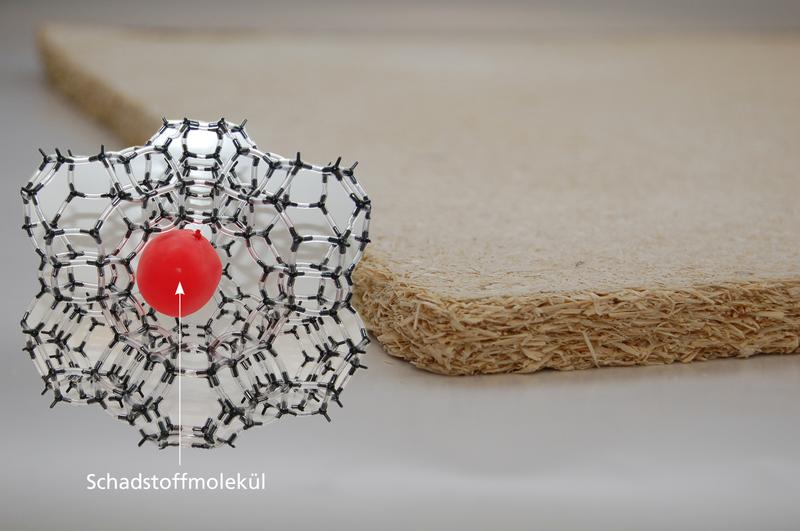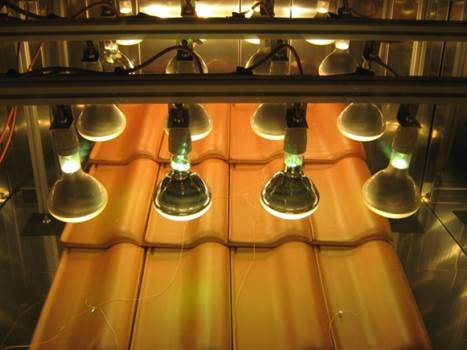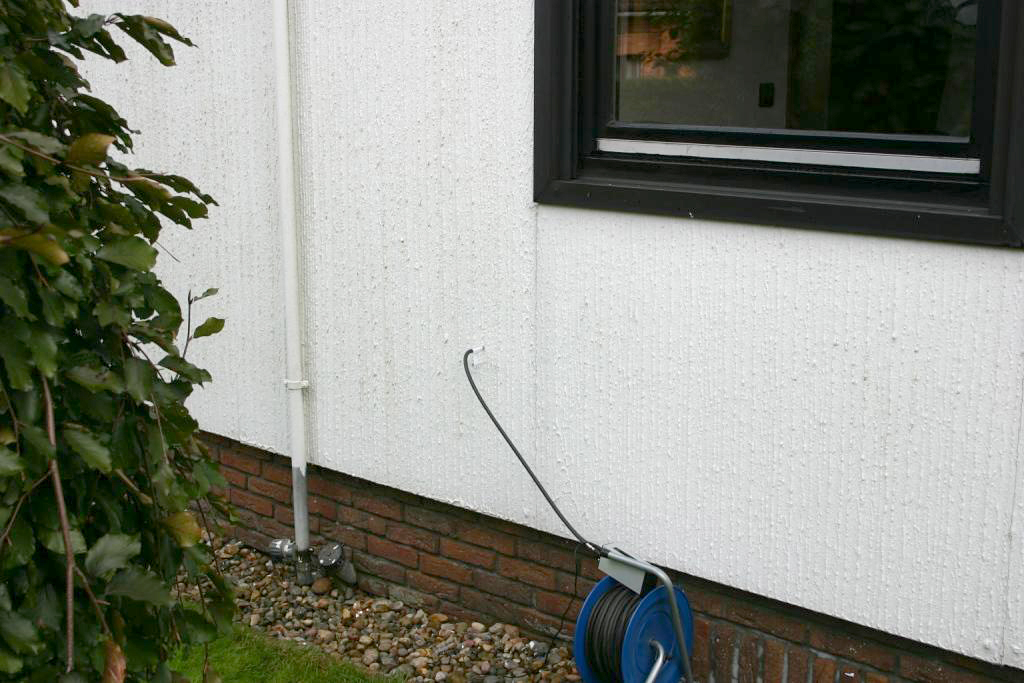Functional building materials can improve the indoor climate as well as adsorb or catalytically degrade pollutants or odorous substances by means of, amongst other things, photocatalysis. The conception of such building materials is very complex, as it can lead to undesirable interactions between emissions from differing materials, or secondary reactions. With our many years of experience and our specialist knowledge of emissions and material properties, we are able to support manufacturers in the development and optimization of materials of this type. In addition, we work closely with other institutions which are active in this field and also contribute our expertise to standardization work.
Sustainable and functional building materials
Research topic

Emissions from construction products, fixtures/furnishings and electrical equipment mix with emissions from outdoor air which are carried in during ventilation. People and animals also emit substances which are released into the air. In addition to the physical framework parameters such as humidity, temperature or air exchange, these processes also have a significant influence on the quality of the indoor air in overall terms.
Functional building materials can contribute towards a reduction in the concentration of health-relevant substances, such as formaldehyde, or unpleasant-smelling substances, such as chloroanisoles, through adsorption or degradation, thereby improving the quality of the indoor air. These building materials can be implemented as early as the skeletal structure stage, in order to minimize the introduction of undesirable emissions from the very beginning - for example in the form of wood-based materials with adsorbing and catalytic function for the reduction of the formaldehyde emission from the binders in the wood-based materials. For the subsequent reduction of undesirable emissions, such as in the case of renovation measures, catalytically furnished materials for the interior have been commercially available for some time. These include, for example, not only coatings for walls, such as wallpaper, paint or plaster, but also other products, such as curtains, floor coverings or floor mats. A focus of our work lies in the examination of the effectiveness of these products and in providing the manufacturers with advice concerning their optimization.
For the successful conception of functional building materials, it is not sufficient to examine individual emissions and emission sources, as under certain circumstances the emitted substances may not remain unchanged in the air. Depending on the constellation, they are, in many cases, re-adsorbed and re-released, degraded or they react with each other to create new substances. Under certain conditions, harmful or unpleasant-smelling substances can be formed from non-critical substances through reaction. This should be taken into consideration in the conception of functional building materials.
As an example, in the catalytic degradation of the odor-intensive compound hexanal through a functional building material, water and carbon dioxide should result. With poorly conceptualized building materials, however, the degradation can lead to the formation of formaldehyde. Furthermore, with catalysts the danger always exists that they will react in an undesirable manner with matrix constituents, such as organic binders.
There is no standard formula for functional building materials. Through many years of experience and specialist knowledge regarding emissions and material properties, we are able to support manufacturers in the development of such products. Our particular strength is a highly individually configurable experimental design. We not only have a wide range of test chambers from 20 liters to 48 cubic meters at our disposal but also the possibilities and the expertise necessary for the targeted calibration of an atmosphere and the metered input of pollutants. Above and beyond the determination of the substances which are emitted from the investigated material, our investigations are aimed at statements concerning the causes of such emissions. We therefore address widely differing issues, such as:
industrial renovation measures for malodorous wooden houses
by-products and efficiency of air purifiers
reduction of the formaldehyde emission of wood-based materials through absorberswith simultaneous catalytic effect on the basis of zeolites or photocatalysis
functional capability of catalytically furnished materials
 Fraunhofer Institute for Wood Research
Fraunhofer Institute for Wood Research 

